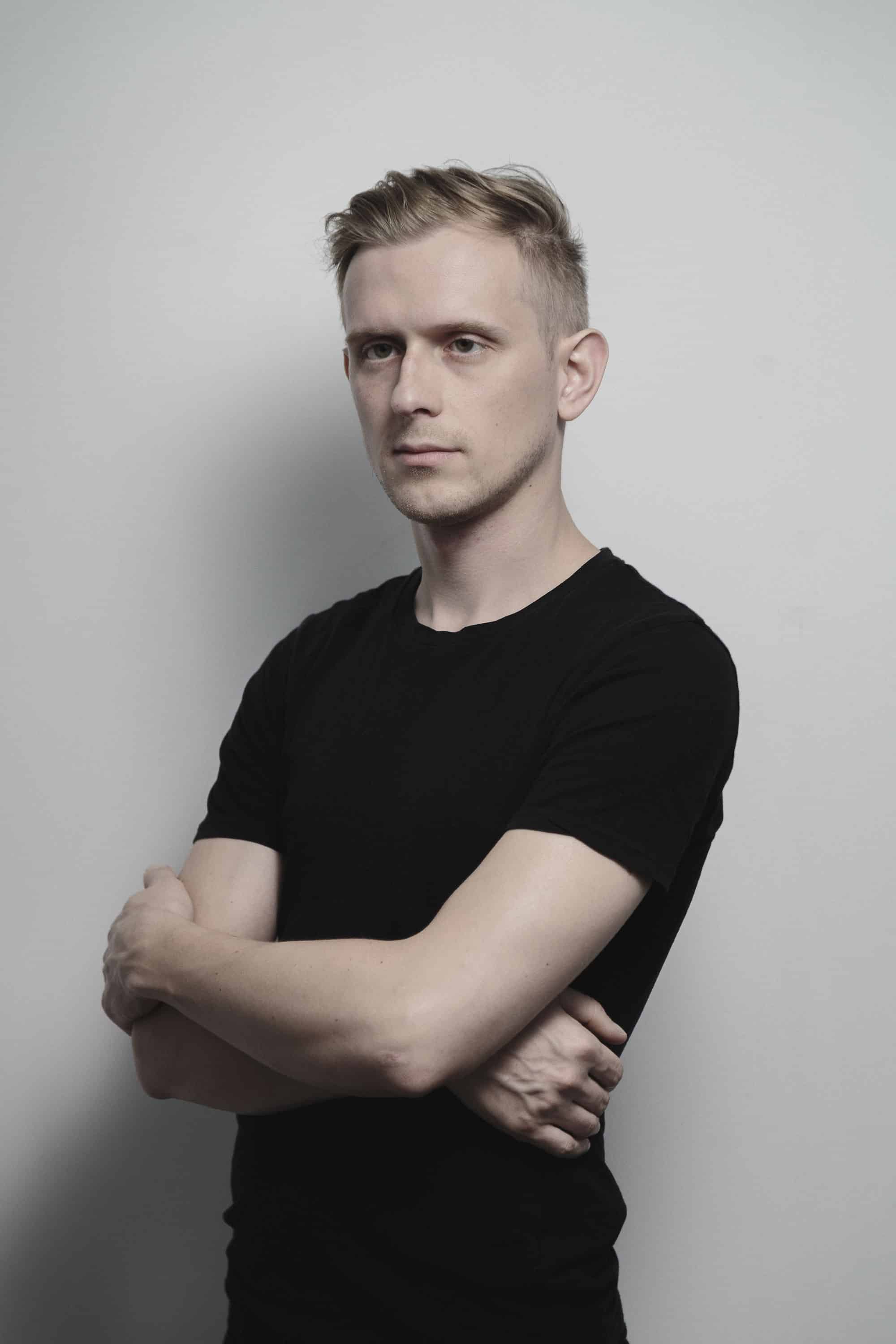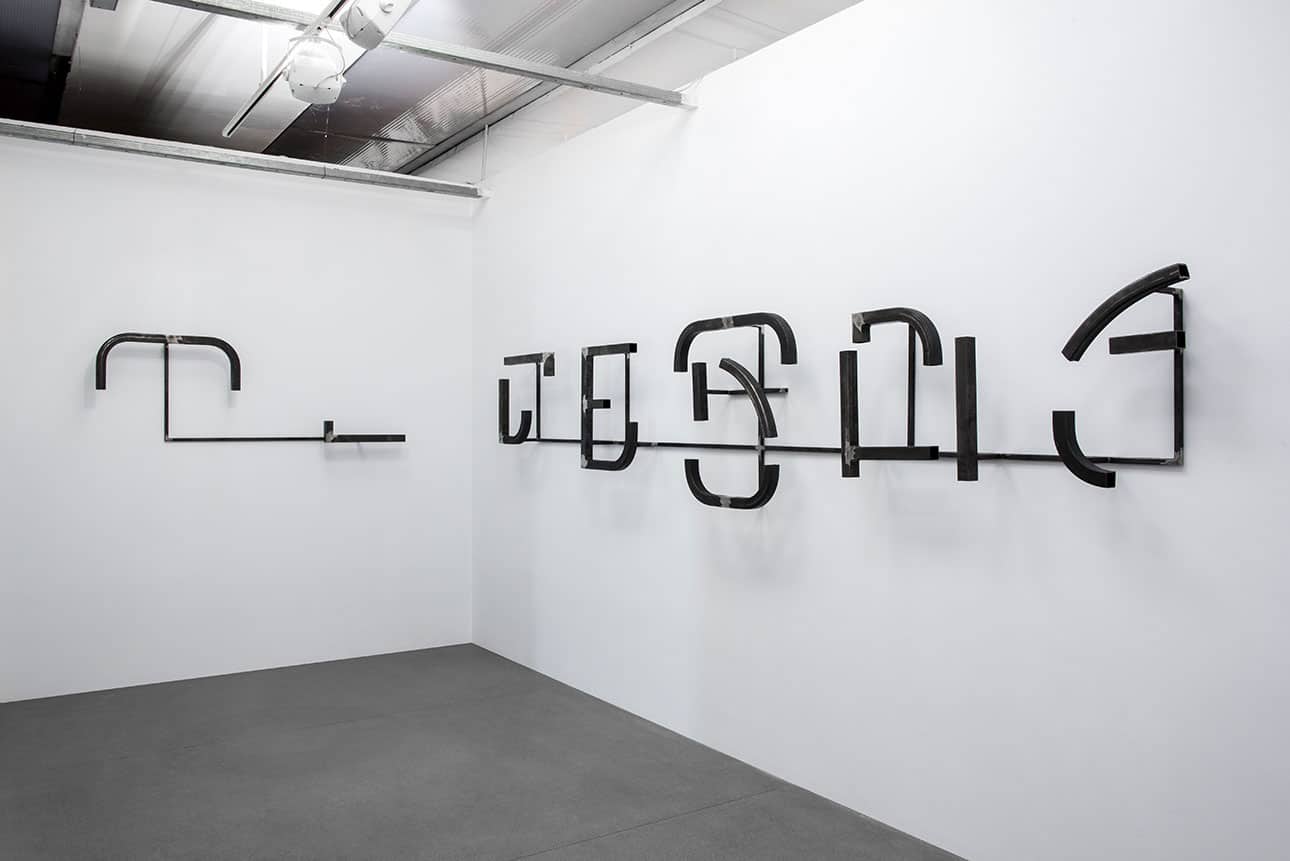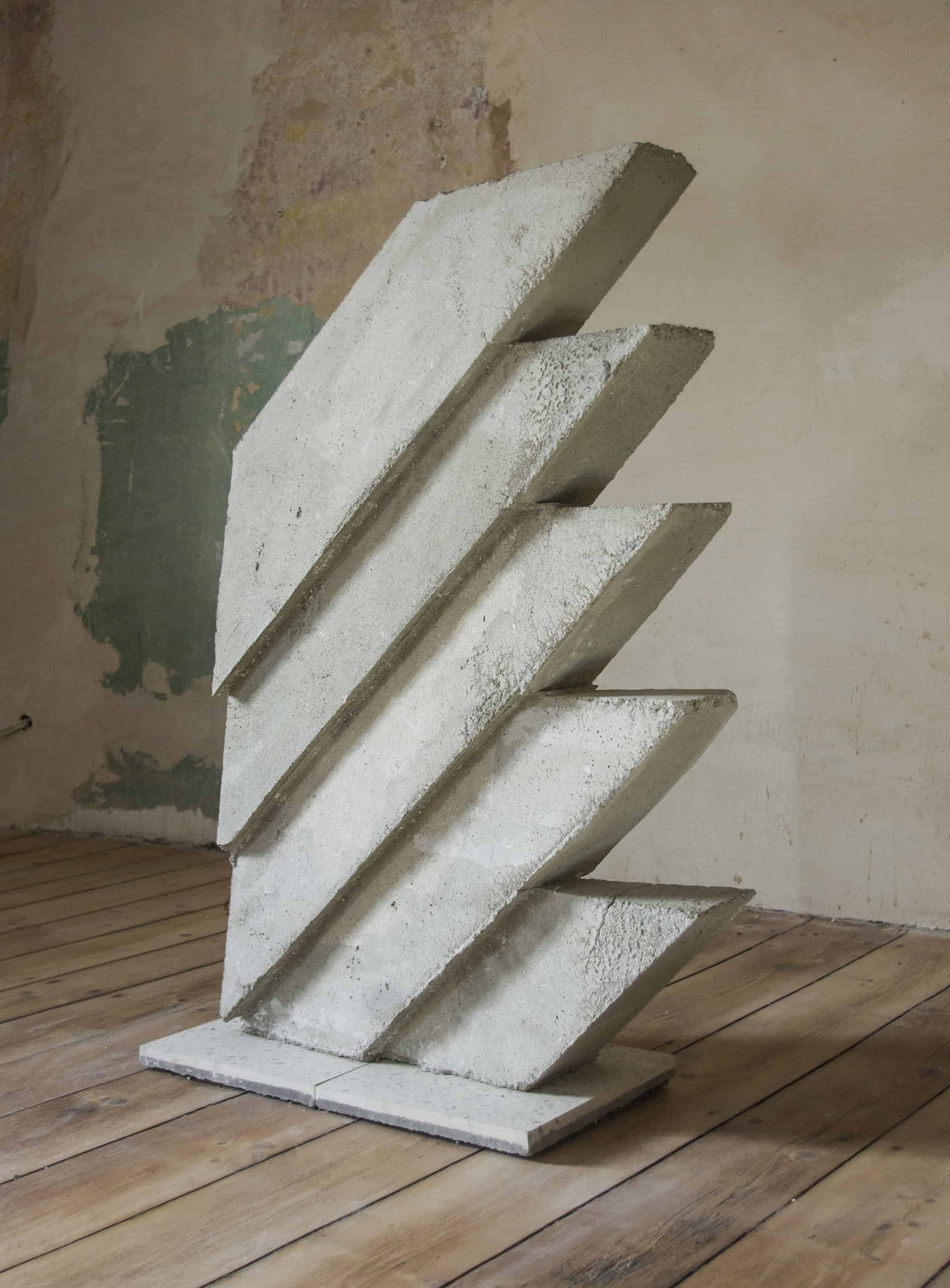Working in-between painting, installation, sound and stage design, Szymon Szewczyk explores multiple forms of expression in his meditations on a person’s relation with material artifacts of reality. His analytic curiosity about the world, which he tends to approach with caution, manifests itself throughout his entire back catalogue.

Szymon Szewczyk, courtesy of the artist
Wojciech Delikta: Even though you graduated in painting at the Academy of Fine Arts in Katowice, your practice goes beyond this medium. Audiences might know you as the author of sculptural objects, written pieces, audio-videos, collages, installations, environments as well as stage designs. How did you transition from painting to interdisciplinary activities?
Szymon Szewczyk: I have treated painting as one of the techniques at my disposal for a while. Over time, it has fused seamlessly into the array of my working methods. One of the greatest benefits of my studies was putting some distance between painting and myself, acquiring a certain wariness – which isn’t to say I’m never going back to oil painting. I find this whole baggage of conventions very captivating but I try to avoid an easy way out and using a single artistic style or technique. For now, I’m seeking out fresh solutions and materials while keeping ideas for paintings somewhere at the back of my head.
WD: Motifs related to museum studies, ethnology, cultural anthropology and natural science make a frequent appearance in your art. Your approach suggests affinity with the work of an archeologist, engineer and ethnographer. In your opinion, is there any distinction between a contemporary visual artist and a scientist or researcher?
SS: As an artist, I can take full advantage of my comfortable position and enjoy greater liberty when it comes to mixing facts, forging audacious connections, creating red herrings and playing jokes. I wouldn’t dare to equate art practice with science, the latter of which serves as the tool for learning about the world. Art on the other hand is all about communicating and challenging the things that seem familiar and benign. More often than not, I prey on the scientific studies and use the language imitating the ethnographic jargon. However my intention is to fuel doubt and knock people off balance rather than conjure up a consistent vision of the world; even if I were doing so, this vision of mine would be filtered through my personal interests and experiences.

Szymon Szewczyk, Glasses for end of the world celebration, 2014, courtesy of the artist
WD: Your exhibition with Bartek Buczek in CCA Kronika titled “Carpet is Lava” (“Dywan to lawa”) was a fascinating demonstration of your avid interest in artifacts worthy of an anthropologist. The show brought to mind the aesthetic described meticulously in the book “Hawaikum. W poszukiwaniu istoty piękna.” Could you please tell us something more about this project?
SS: The aim of the exhibit was to create one’s immediate surroundings with nearby objects, juxtaposing this dream about comfortable life with the resources that are actually at our disposal. Since Bartek and I were investigating methods and materials that give the illusion of beauty and security, the exhibition featured such objects as a flowerbed and window grill from reinforcing bars, the shape of which referenced Kandinsky’s art. In this project, I attempted to establish the connection between DIY practices originating from the period of political transformation in the 1990s or the Polish People’s Republic (PRL) and the appreciation of constructivist tradition in history. It definitely was an exercise in creative anthropology.
WD: Does the tangible aspect of your works hold any significance – their material and ways in which you can manipulate it?
SS: Selection of materials depends on circumstances and concepts. Some of my favorites include steel and cement because of their degree of “transparency” and omnipresence – the objects I produce from these materials reflect the pieces of recognized shapes and contexts encoded in the consciousness. I often use acrylic cement that resembles stone after proper processing and coloring. As a result, created objects seem as if they belonged to some ethnography museum although in fact they are merely their polymeric reproductions. I also enjoy working with cheap and easily accessible materials, such as self-adhesive sheets imitating marble or wood, artificial substitutes deluding the audience into thinking they come in contact with something much more expensive and sophisticated.

Szymon Szewczyk, Tag 8, 2015, courtesy of the artist
WD: Alva Noto (i.e. Carsten Nicolai) mentioned once that working with both sound and image doesn’t have to bring two completely different results. You also dabble in music as DMKHV. Do you see any correlation between these two areas of your practice?
SS: As DMKHV, I’ve liberated myself from any limitation. The things I do balance on the edge of electronic music and sound design. Some common denominators would be “trashiness”, rawness and immersion into the overabundance of cultural heritage. I mix music samples, processed pop tracks and field recordings, going from concrete music to post-club electronics. From my perspective, it’s far from a direct extension of my visual art practice, yet sometimes I do feel these two spheres coming together and at some point they will meet. It’s inevitable, I guess.
WD: Fantasy about the man’s final day, ruins of the National Museum in Rio de Janeiro, desire to escape and hide away somewhere in the forest, in the middle of nowhere, glasses to be worn while celebrating the Armageddon – these are some of your art’s components projecting escapism, defeatism and critique of contemporary (Western-centric) world. Is it some sort of demonstration of the bitter analysis of the way things are right now or perhaps the pessimistic vision of the future?
SS: The world we live in is an extremely complex and volatile structure. A number of interconnected components influence one another, and if one of these stops working then the entire thing might collapse. This impression is reinforced by our easy access to information that makes us think we know it all. Any potential gaps in knowledge are filled immediately with conjectures and fantasies that incite suspicion and anxiety. We watch the ruins of fallen civilizations wondering what will remain after ours is gone. For this reason, the picture of a meteorite from the museum halls in Rio that went down in flames in September 2018 seems so utterly fascinating to me. In one night, the collection which held immense importance not only for Brazil but also the shape of the modern world was irretrievably lost. One of the few objects which survived that night was the gigantic iron stone from space. It looked like a malicious diss on human efforts directed at collecting and cataloging. Rather than a critique of today’s world, my works are a humorous representation of its ephemerality, futile attempts at coming to terms with this situation.

Szymon Szewczyk performing as DMKHV during the „No Regrets” exhibition at Galeria Szara, Warsaw 2020, courtesy of the artist
WD: Stage design seems like a separate branch of your creative activity. Is there any common thread between stage design and other areas of your interest?
SS: In my mind, every exhibit or installation is a separate composition. What unites art and stage design is paying special attention to space. However working at theatre and its end result, in other words the representation, always stems from collaboration and various joined ideas that integrate creativity with craftsmanship, autonomy and collective action. Sometimes my art installations resemble stage designs based on the use of light as it was the case with my last show titled “No Regrets” organized during Warsaw Gallery Weekend. The pieces were designed while taking into consideration the space of Biennale Warsaw where the only source of light were the lightbulbs incorporated into the works themselves, windows covered with raw OSB boards. I believe that was the moment these two spheres actively collided the most.
WD: You are last year’s winner of Young Lynxes Open Call. What does participation in art competitions mean to you personally?
SS: First and foremost, competitions allow a person to reach a wider audience. I hardly ever apply for competitions myself, so it’s difficult for me to formulate some sort of general statements.

Szymon Szewczyk, exhibition „Man’s Last Day” at the Gallery of Modern Art BWA, Katowice 2017/2018, photo: Krzysztof Szewczyk, courtesy of the artist
WD: As you’ve mentioned, your exhibit “No Regrets” has opened recently as part of Warsaw Gallery Weekend. What are you working on now?
SS: I start working gradually on another series of intarsias made from the acrylic cement. This time around, I opt for clear representation. I’m also fascinated by the subject of amassing and categorizing pieces of information, knowledge and compulsive need for order – I will continue to explore these issues addressed during the exhibit “Light from Above.” The jury is still out on the final form of the show.
Wojciech Delikta – art historian, member of the International Association of Art Critics (AICA), grant winner of the John F. Kennedy Institute for North American Studies in Berlin. His articles were published in magazines such as “Arteon”, “Czas Kultury”, “Contemporary Lynx” and “Vogue Poland.”

Szymon Szewczyk, Wing / project for a monument (from Man’s last day series), 2018, courtesy of the artist











